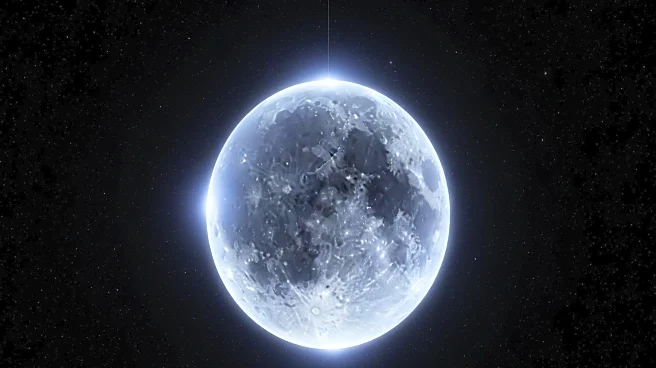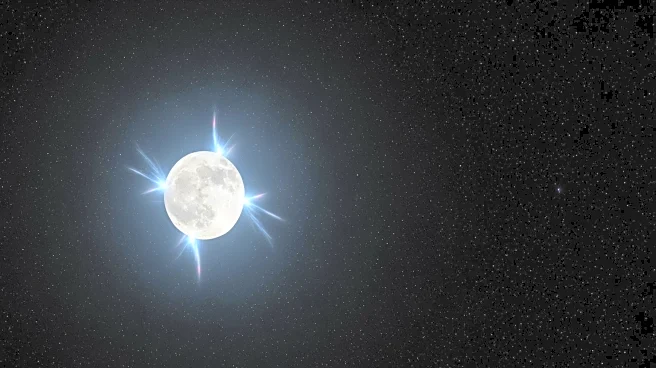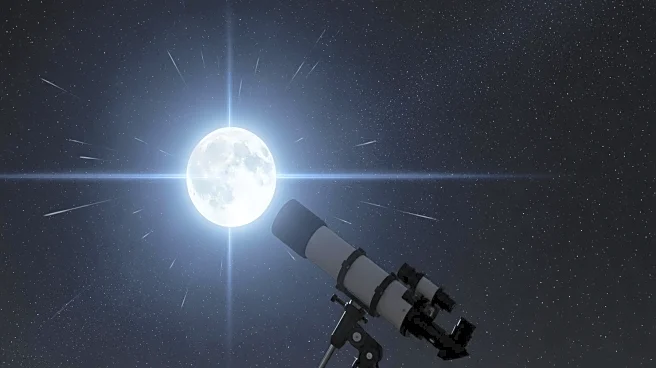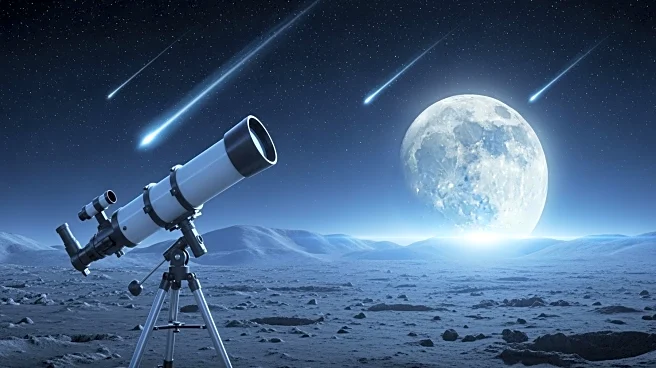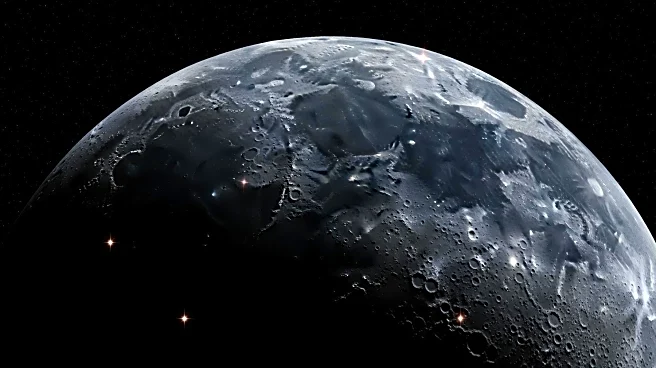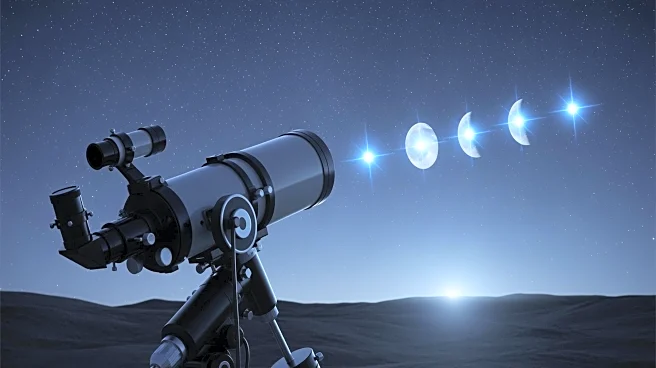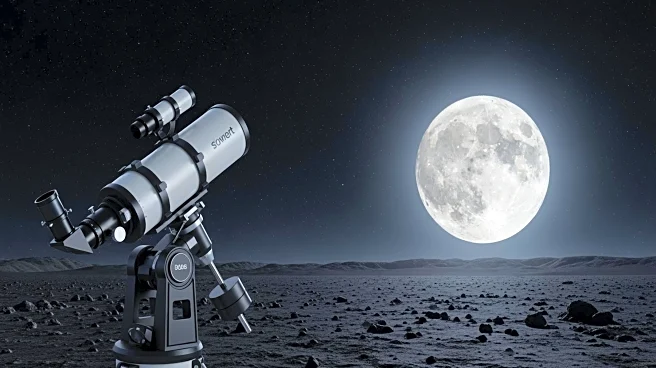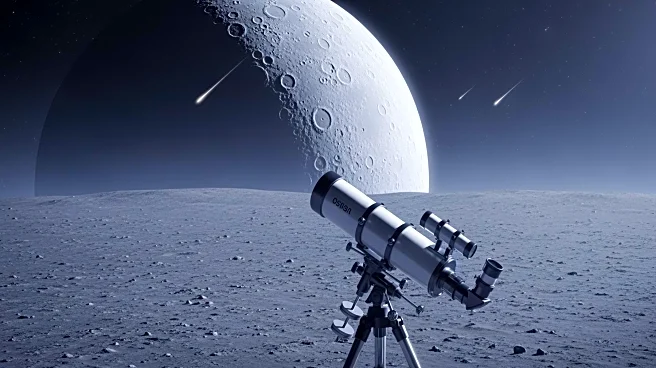What's Happening?
Astronomer Daichi Fujii from Japan's Hiratsuka City Museum has recorded two mysterious flashes on the Moon's surface, sparking debate about unusual lunar activity. The first flash was observed on October
30, followed by a second flash two days later. These bright lights are believed to be caused by space rocks impacting the Moon, linked to the Taurid meteor shower, which occurs annually in late October and early November. The Moon's lack of atmosphere means meteors are only visible upon impact, creating brief fiery flashes and craters. Fujii's advanced telescopic setup has allowed him to observe nearly 60 lunar impacts over 15 years, with the recent flash creating a crater three meters wide.
Why It's Important?
The observation of these lunar flashes is significant as it provides insights into the frequency and impact of meteoroid collisions on the Moon. Understanding these events can help scientists better predict and study similar occurrences on Earth, potentially aiding in the development of protective measures against meteor impacts. Additionally, these observations contribute to the broader understanding of lunar geology and the effects of space weathering, which are crucial for future lunar exploration and potential colonization efforts.
What's Next?
Further observations and studies are likely to be conducted to confirm the cause of these flashes and to monitor ongoing meteor activity on the Moon. Scientists may use this data to refine models of meteoroid impacts and improve predictions of similar events on Earth. The findings could also influence future lunar missions, as understanding the Moon's surface dynamics is essential for safe landings and operations.
Beyond the Headlines
The flashes highlight the Moon's role as a natural laboratory for studying space phenomena. The lack of atmosphere allows for direct observation of meteoroid impacts, offering unique opportunities to study the effects of space weathering. This research could have implications for understanding the history of the solar system and the processes that shape planetary bodies.
